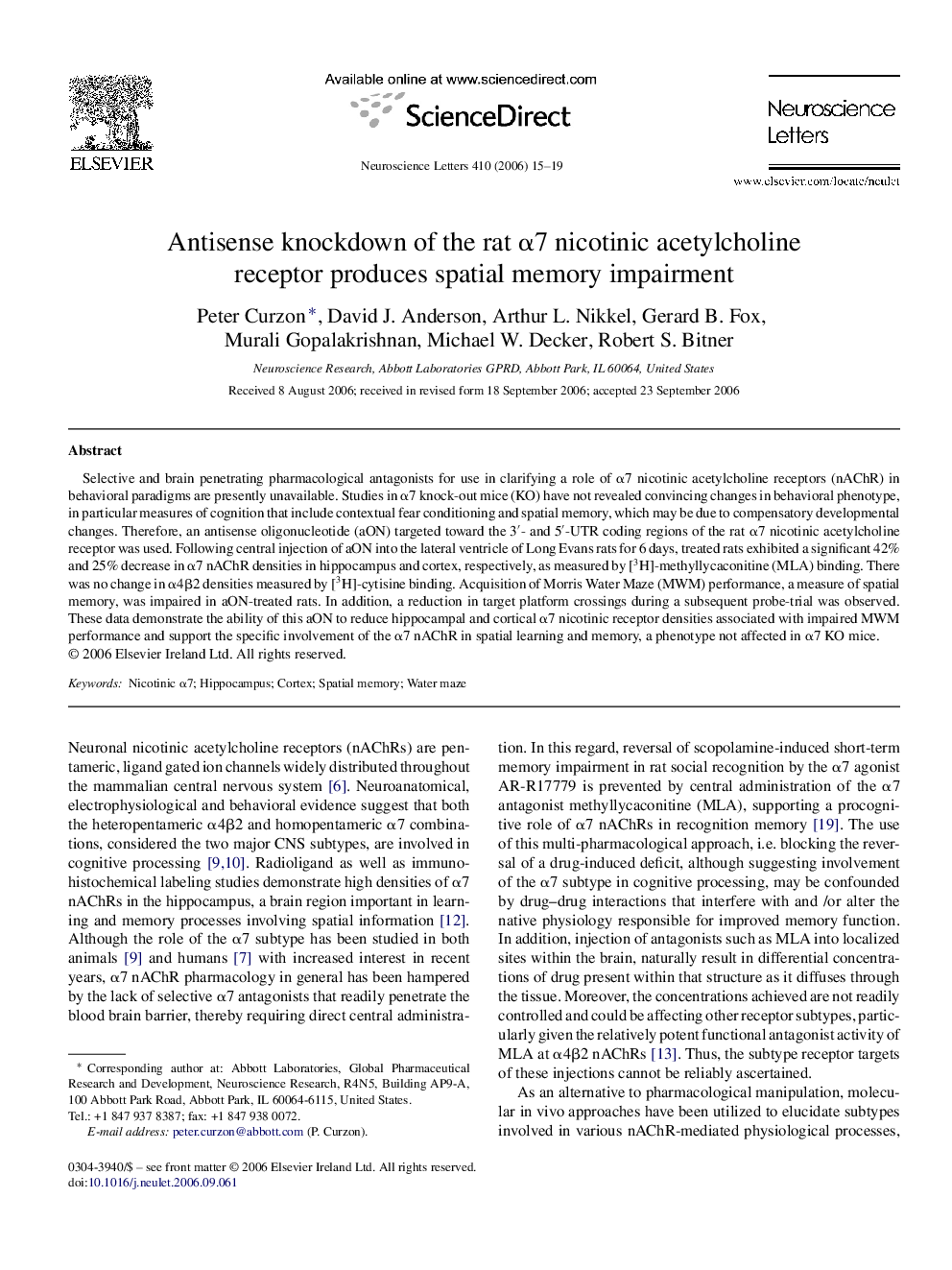| Article ID | Journal | Published Year | Pages | File Type |
|---|---|---|---|---|
| 4350324 | Neuroscience Letters | 2006 | 5 Pages |
Selective and brain penetrating pharmacological antagonists for use in clarifying a role of α7 nicotinic acetylcholine receptors (nAChR) in behavioral paradigms are presently unavailable. Studies in α7 knock-out mice (KO) have not revealed convincing changes in behavioral phenotype, in particular measures of cognition that include contextual fear conditioning and spatial memory, which may be due to compensatory developmental changes. Therefore, an antisense oligonucleotide (aON) targeted toward the 3′- and 5′-UTR coding regions of the rat α7 nicotinic acetylcholine receptor was used. Following central injection of aON into the lateral ventricle of Long Evans rats for 6 days, treated rats exhibited a significant 42% and 25% decrease in α7 nAChR densities in hippocampus and cortex, respectively, as measured by [3H]-methyllycaconitine (MLA) binding. There was no change in α4β2 densities measured by [3H]-cytisine binding. Acquisition of Morris Water Maze (MWM) performance, a measure of spatial memory, was impaired in aON-treated rats. In addition, a reduction in target platform crossings during a subsequent probe-trial was observed. These data demonstrate the ability of this aON to reduce hippocampal and cortical α7 nicotinic receptor densities associated with impaired MWM performance and support the specific involvement of the α7 nAChR in spatial learning and memory, a phenotype not affected in α7 KO mice.
